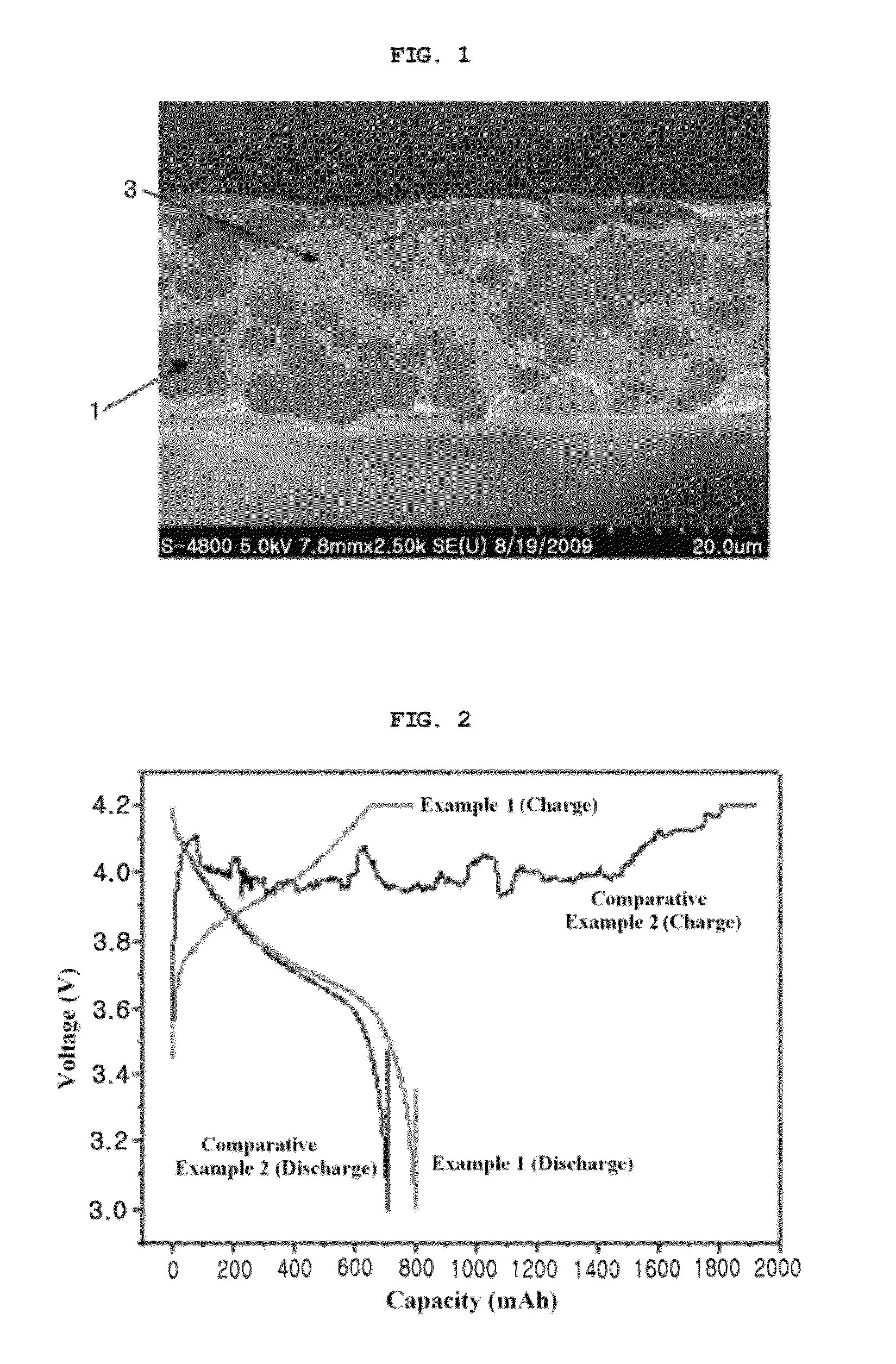Separator including porous coating layer, method for manufacturing the separator and electrochemical device including the separator
a technology of electrochemical devices and separators, which is applied in the direction of cell components, final product manufacturing, sustainable manufacturing/processing, etc., can solve the problems of complex fabrication, thermal runaway, and safety problems of lithium ion batteries, so as to prevent the constant voltage (cv) region from lengthening, suppress the electrochemical reaction from proceeding, and short circuit
- Summary
- Abstract
- Description
- Claims
- Application Information
AI Technical Summary
Benefits of technology
Problems solved by technology
Method used
Image
Examples
example 1
Manufacture of Separator
[0058]About 14 μm thick of non-woven fabric was prepared. The non-woven fabric was composed of polyethylene terephthalate microfibers having an average thickness of about 10 μm. The pores of the non-woven fabric had an average diameter of 7 μm and a longest diameter distribution of 1 to 20 μm.
[0059]60 wt % of powder (average diameter=0.3 μm) of polyvinylidene fluoride as a thermoplastic polymer was dispersed in water. The non-woven fabric was dipped in and taken out of the aqueous dispersion. The wet non-woven fabric was dried with hot air to remove the water. FIG. 1 is a cross-sectional scanning electron microscope (SEM) image of the resulting substrate. Referring to FIG. 1, the pores of the non-woven fabric substrate 1 were filled with the fine thermoplastic powder 3.
[0060]Meanwhile, polyvinylidene fluoride-co-hexafluoropropylene and cyanoethyl polyvinyl alcohol were added in a weight ratio of 10:2 to acetone. The mixture was dissolved at 50° C. for at leas...
example 2
[0067]A separator was manufactured in the same manner as in Example 1, except that powder (average diameter=0.5 μm) of polystyrene as a thermoplastic polymer was used instead of the polyvinylidene fluoride powder. Thereafter, the procedure of Example 1 was repeated to fabricate a prismatic battery and a cylindrical battery.
example 3
[0068]A separator was manufactured in the same manner as in Example 1, except that powder (average diameter=3 μm) of polyethylene as a thermoplastic polymer was used instead of the polyvinylidene fluoride powder. Thereafter, the procedure of Example 1 was repeated to fabricate a prismatic battery and a cylindrical battery.
PUM
| Property | Measurement | Unit |
|---|---|---|
| diameter | aaaaa | aaaaa |
| diameter | aaaaa | aaaaa |
| pore size distribution | aaaaa | aaaaa |
Abstract
Description
Claims
Application Information
 Login to View More
Login to View More - R&D
- Intellectual Property
- Life Sciences
- Materials
- Tech Scout
- Unparalleled Data Quality
- Higher Quality Content
- 60% Fewer Hallucinations
Browse by: Latest US Patents, China's latest patents, Technical Efficacy Thesaurus, Application Domain, Technology Topic, Popular Technical Reports.
© 2025 PatSnap. All rights reserved.Legal|Privacy policy|Modern Slavery Act Transparency Statement|Sitemap|About US| Contact US: help@patsnap.com

